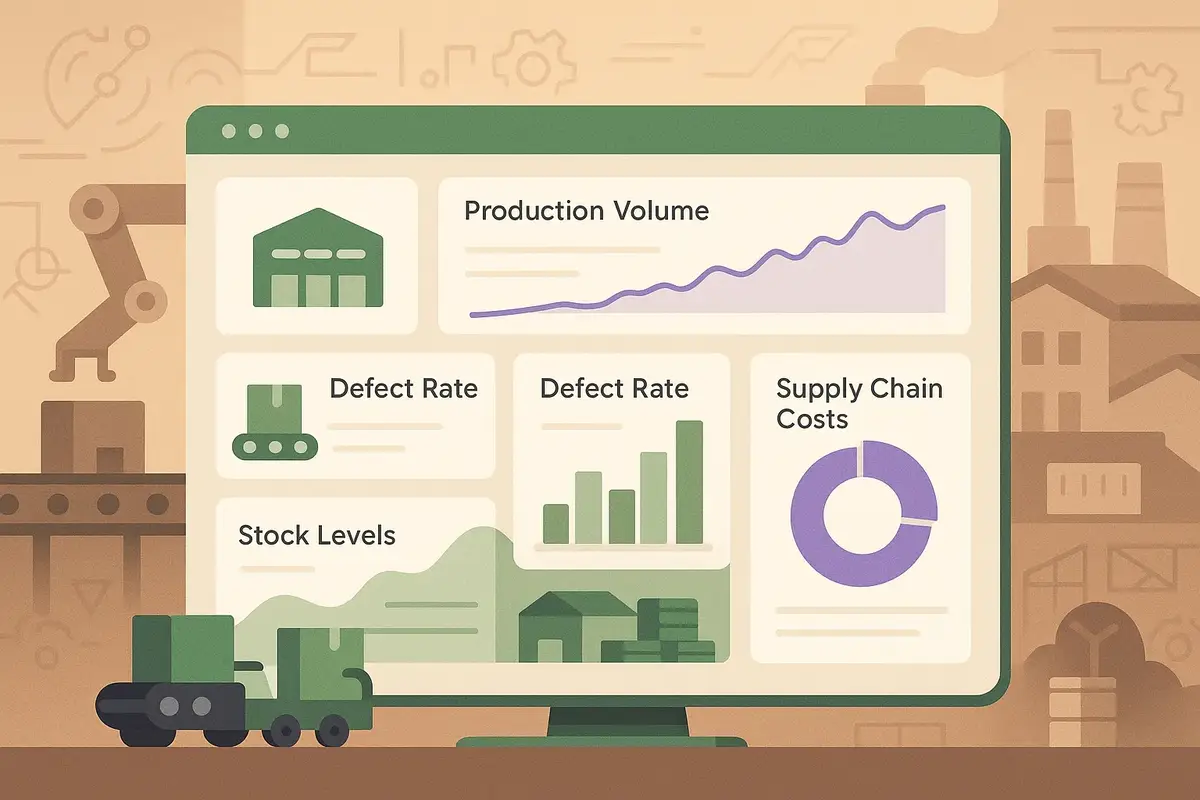Find and Liquidate Dead Stock: Complete Playbook with Excel Calculator
Dead inventory ties up cash, fills warehouse space, and kills profitability. Learn how to identify slow-movers, calculate true carrying costs, and execute a profitable liquidation strategy.

The Hidden Cost of "We'll Sell It Eventually"
You have 500 units of a product that hasn't sold in 6 months. COGS was $25/unit. That's $12,500 tied up. But the real cost is higher:- Warehouse space: $0.50/unit/month × 6 months = $1,500
- Opportunity cost: $12,500 invested at 10% annual return = $625 lost
- Risk of obsolescence: Fashion/tech loses 20% value every quarter = $2,500 potential loss
- Total hidden cost: $4,625 (37% of COGS)
What Qualifies as Dead Stock?
Not all slow-movers are dead. There's a spectrum:The Dead Stock Hierarchy
1. Clinically Dead (Liquidate Immediately)- Zero sales in 180+ days
- Inventory turnover < 0.5x per year
- Seasonal product past its season
- Discontinued, damaged, or expired
- <5 sales in 180 days
- Inventory turnover < 1x per year
- Sitting for 12+ months
- Next season's version arriving soon
- Inventory turnover 1-2x per year
- Steady trickle of sales
- Not time-sensitive
- May improve with marketing
- Inventory turnover 4-8x per year
- Consistent sales velocity
- Reordering regularly
The Inventory Turnover Formula
Inventory Turnover = Cost of Goods Sold / Average Inventory Value Or simplified per SKU: Inventory Turnover = Units Sold (12 mo) / Average Units in Stock Example:- Units Sold Last Year: 120
- Average Inventory: 100 units
- Turnover: 120 / 100 = 1.2x per year
Finding and Analyzing Dead Stock in Excel
Export Your Full Inventory List
From Shopify: Products > Export. Get SKU, Product Name, Current Stock, Cost per Item, Date Added. This is your starting point.

Pull 12-Month Sales Data
Export orders from last 365 days. Use pivot table to sum Units Sold by SKU. Formula: =SUMIF(orders[SKU], this_sku, orders[Quantity]). This shows actual sales velocity.

Calculate Inventory Turnover Ratio
In your inventory sheet, add column: =UnitsSoldLastYear / AverageInventory. Sort descending. Products at the bottom (<2.0) are your problem children.

Calculate Days of Supply
Days of Supply = (Current Stock / Daily Sales Rate). Formula: =CurrentStock / (UnitsSold365 / 365). Over 180 days = dead stock. Over 365 days = ancient history.

Calculate True Carrying Cost
Carrying Cost per Unit per Month = (Storage Rate × Volume) + (COGS × Monthly Interest Rate) + Obsolescence Risk. Typical total: 2-3% of COGS per month.

Calculate Break-Even Liquidation Price
Break-Even = COGS + (Accumulated Carrying Costs). Any sale above this recovers your money. Formula: =COGS + (MonthsInStock × MonthlyCost). Anything less is a loss but stops further bleeding.

Build Your Liquidation Priority Matrix
Create score: (Units in Stock × COGS × Months Sitting). Sort descending. Highest scores are bleeding the most cash. These get liquidated first.

The Liquidation Strategy Decision Tree
Not all dead stock should be liquidated the same way. Choose based on value and velocity:Strategy 1: Deep Discount (50-70% Off)
When to use: High volume, low COGS, need it gone NOW- Example: 1,000 units of $5 keychains
- Liquidation price: $2-3
- Goal: Clear space, recover something
- Channel: Your own site with banner ads
Strategy 2: Bundling
When to use: Dead stock + bestseller = perceived value- Example: Slow-selling phone case + popular charging cable
- Bundle price: $29 (separate: $40)
- Goal: Move dead stock while maintaining margin on bestseller
- Channel: Homepage bundle offer
Strategy 3: Liquidation Partners
When to use: Premium brand can't be discounted heavily on your site- Example: Designer apparel ($150 COGS)
- Liquidation price: $80-100
- Goal: Preserve brand, quick cash
- Channels: TJ Maxx, Gilt, Rue La La
Strategy 4: Donation Write-Off
When to use: Can't sell above break-even, need tax deduction- Must be legitimate charity (not "mystery box" resellers)
- Get written receipt for tax filing
- Deduct Fair Market Value or COGS (IRS rules vary)
Strategy 5: Return to Supplier (if possible)
When to use: You have return agreements, product is sellable- Expect 25-50% restocking fee
- Still better than $0
- Negotiate terms before placing large future orders
| Markdown Level | Expected Sales Velocity | Typical Margin | Use Case |
|---|---|---|---|
| 10-20% off | 1.5-2x normal | Still profitable | Slow movers, test discount |
| 30-40% off | 3-5x normal | Break-even to small profit | Clearance, fast clear |
| 50-70% off | 8-12x normal | Loss on item, gain on space | Dead stock, liquidation |
| 75%+ off | Very high velocity | Significant loss | Disposal alternative, last resort |
The Markdown Cadence Strategy
The Excel Dead Stock Calculator
Build a simple tracker to prevent future dead stock:Column Structure:
1. SKU 2. Product Name 3. Date First Stocked 4. Current Units 5. COGS per Unit 6. Total Value (Units × COGS) 7. Units Sold L90D (last 90 days) 8. Daily Sales Rate (=Col7/90) 9. Days of Supply (=Col4/Col8) 10. Inventory Turnover 11. Status (formula-driven) 12. Action RequiredAuto-Status Formula:
=IF(J2<0.5,"Dead-Liquidate Now",
IF(J2<1,"Critical-Liquidate 30D",
IF(J2<2,"Slow-Monitor",
"Healthy")))Conditional Formatting:
- Red: Dead (turnover <0.5)
- Orange: Critical (0.5-1.0)
- Yellow: Slow (1.0-2.0)
- Green: Healthy (>2.0)
Common Mistakes to Avoid
Verification Checklist
- You have a list of all SKUs with <2x annual inventory turnover
- You know the total dollar value tied up in dead stock
- You've calculated break-even liquidation price for each dead SKU
- You have a liquidation plan with specific dates and discount levels